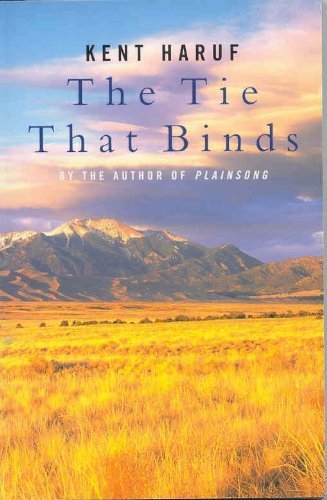What do you think?
Rate this book


In The Tie that Binds, his critically acclaimed first novel, Kent Haruf delivers the sweeping tale of eighty-year-old Edith Goodnough. Narrated by her neighbour, Edith's tragedies unfold: a tough childhood, a mother's death, a violence that leaves a father dependent on his children, forever enraged. She is a woman who sacrifices everything in the name of family - until she is forced to reclaim her freedom in one dramatic and unexpected gesture. Breathtaking and truthful, The Tie That Binds is a powerful tribute to the demands of rural life, and to the tenacity of the human spirit.
'Plainsong is beautifully crafted, alive and quietly magnificent. I read it in one mesmerising sitting. I had no choice; it wouldn't let me go' Roddy Doyle
257 pages, Kindle Edition
First published January 1, 1984





If you like well-developed characters and addictive stories, you'll love Kent Haruf as well as his first novel, THE TIE THAT BINDS.
Neighbor and family friend Sanders Roscoe narrates the life story of 80 year old Edith Goodnough and how she came to be lying in a hospital bed accused of murder.
Her long, unimaginable hard life is filled with tragedy and constant sacrifice as she lives with her wild exasperating father and thoughtless brother. Oh the life that might have been.......I just wanted to push Edith right out the door!
Highly recommend this beautifully descriptive and powerful look at a woman of strength and labor-intensive farm life in Holt, Colorado. (sad I only have two more Haruf novels left to read)
